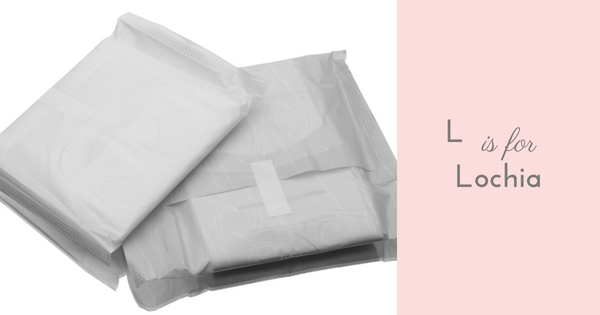Lochia is the term used for the bleeding occurring after giving birth. It is composed of blood, tissue, and bacteria and is akin to a very long, heavy period. You will experience this postpartum bleeding whether your baby was born vaginally or by C-section. It typically lasts ~27 days, but it is normal for up to six weeks postpartum. The duration, heaviness, and length of each stage varies from mother to mother, and every pregnancy is different.
Why does this happen?
When the placenta detaches from the uterus a large, open wound is left to heal. Some of the discharge that comprises lochia is blood from the healing of this wound. The rest is largely composed of the lining of the uterus which must be shed.
What are the phases of lochia?
There are three phases: rubra, serosa, and alba. The amount of lochia should consistently decrease as time goes on. You may notice a gush when you sit or stand from laying down or stand up. This is normal and is the release of blood that has pooled.
- Phase One: Lochia Rubra – lasts approximately three to four days after birth. It is bright red in color and is composed mostly of blood. Clots (up to about the size of a golf ball) are normal. Larger clots (similar in size to a baseball) are a cause of concern and reason to call your OB or midwife.
- Phase Two: Lochia Serosa – lasts approximately one week. It is thinner than lochia rubra and its color goes from bright red to pink to pinkish-brown. It contains mucous, red and white blood cells, and exudate. Its output is less than phase one and you should notice fewer clots.
- Large or bright red clots during this time may indicate a problem and warrant a call to your OB or midwife
- Phase Three: Lochia Alba – lasts about two to four weeks. The color progresses from pinkish-brown to yellowish-white to whiteish. It is composed of white blood cells, cholesterol, fat, epithelial cells, mucous, and small amounts of red blood cells. It should have no odor, no real flow, and you should not notice any clots.
- Clots, foul odor, or bright red blood can be indicative of a problem and warrant a call to your OB or midwife
Keep in mind that the flow of lochia can increase with increased activity. Red spotting after phase one should signal you to stop and rest.
Management of Lochia
- Breastfeed – this releases oxytocin helping the uterus to contract and reducing bleeding.
- Pads – you can use disposable or cloth pads, but never tampons or a menstrual cup as anything inserted into the vagina can be a potential source of infection during this period.
- It is strongly recommended that you avoid taking a sit-down bath or going in a swimming pool, as bacteria is easily spread from the vagina to the uterus during this time.
- Urinate Often – even if you don’t feel like you need to. This helps create more room for the uterus to contract, which is necessary for healing.
- Rest – as much as possible. This promotes healing.
- Increase Your Iron Intake (with your provider’s approval) – iron is a key ingredient in the formation of red blood cells. Low iron can lead to hemorrhaging after birth.
- The iron content of your placenta pills can help reduce postpartum bleeding. Since this iron is from your body and not an exogenous source, it is easier for your body to use and less likely to cause constipation that other iron supplements have a reputation for causing.
- Avoid hormonal contraception or sex – for at least the first six weeks postpartum, until you are cleared by your OB or midwife.
- This helps reduce bleeding and prevents potentially introducing infection.
When to be Concerned
The following may be signs of an infection or retained placenta, and you should call your OB or midwife immediately if you are experiencing any of these symptoms:
- Lochia has an unpleasant or foul odor
- You are experiencing a fever or chills
- Bleeding remains bright red
- Tenderness in your abdomen, not related to incision
- Unusually heavy bleeding, defined as soaking through one pad per hour
- Clots the size of a baseball
- Dizziness or fainting
If you liked this blog, you may also like
M is for Meconium
N is for NICU
O is for Oxytocin
This post is for educational purposes only. It should not take the place of consultation with your medical provider.

